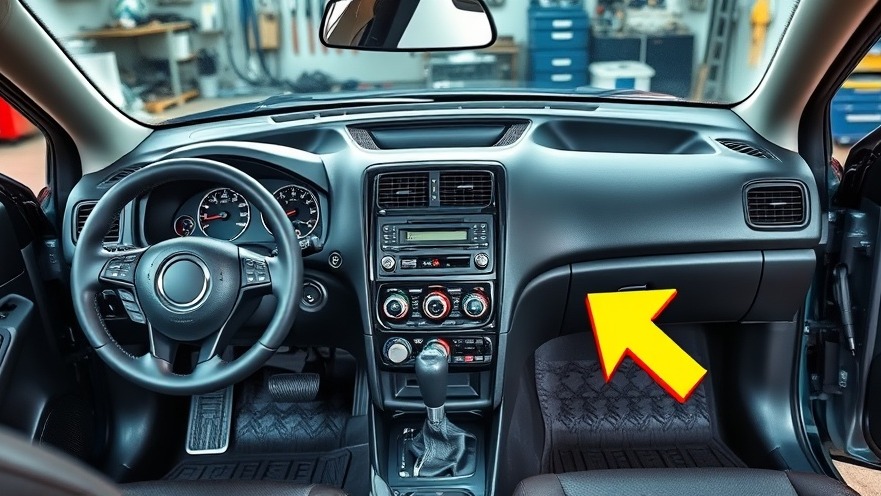
Is Your Vehicle Blowing Cold Air? Understanding Common Causes
If you've noticed that your car or truck isn't providing the heat you expect, it's crucial to take a minute to troubleshoot before diving into more complicated repairs. The first place to start is with the coolant level. An adequate amount of coolant is essential, as low levels can hinder the heating system's efficiency. Check the coolant reservoir and make sure it's filled to the proper mark. If the coolant appears low, this could be a sign of a leak or an air pocket within the cooling system.
In 'No Heat in Your Car or Truck? 5 Parts You Need to Check and Replace from Easiest to Hardest', the discussion dives into critical checks for vehicle heating issues, prompting us to explore why these steps matter and how to effectively manage heating concerns.
Catching Coolant Leaks: A Simple Yet Critical Step
Leaks can occur even if the coolant level seems fine. Thus, it’s crucial to inspect for any noticeable signs of leaks, particularly under the vehicle. Look closely around the engine, hoses, and radiator to pinpoint any escape routes for the coolant. Identifying a leak early on can prevent further issues down the line and possibly save you significant repair costs.
Temperature Issues: Is Your Engine Too Cool?
Next, inspect the thermostat, which plays a vital role in regulating your engine's temperature. A malfunctioning thermostat that remains open may prevent the engine from reaching the optimal operating temperature, typically around 210°F. Check your dashboard gauges; if the needle stays near 170°F, it’s time to replace the thermostat. Inadequate heating often points to this minor yet impactful component.
HVAC System: Ensuring Proper Airflow
Another factor to assess is the HVAC system's blend doors. These doors are responsible for directing airflow through the heater core. If they fail to open or close properly, you’ll notice temperature fluctuations or a complete lack of heat. Sometimes, observing sounds or changes in airflow intensity can clue you into whether everything is functioning correctly. A malfunction here might not only require a simple fix but could be an indicator of a larger issue within your HVAC system.
Checking for Flow Through the Heater Core
Lastly, it’s essential to ensure that coolant flows through the heater core effectively. If you suspect there's a blockage, you can perform a simple test. Disconnect the hoses attached to the heater core, and pour water through one end. If water flows out freely, everything is working as it should. If not, then the heater core may be clogged, signalling that a replacement may be necessary.
Do-It-Yourself vs. Professional Help: Weighing Your Options
While replacing a heater core can be a complicated task depending on your vehicle, many of the preliminary checks can be conducted without professional assistance. For those who feel confident, this job is feasible, especially if you have a reliable guide from resources like 1auto.com, which provides detailed videos and part ordering. Yet, if the process feels daunting, don’t hesitate to seek professional help. An experienced mechanic can provide assistance, ensuring the job is completed efficiently and correctly.
Final Thoughts: Understanding Maintenance Is Key
Knowing how to troubleshoot heating issues in your vehicle can save you time and money. Regular checks and maintenance can prevent minor problems from escalating, ensuring that your car remains in top condition. If you take these steps and find you still need to replace the heater core, remember that it’s a common repair. With patience and the right resources, you can get your heat back!
 Add Row
Add Row  Add
Add 




Write A Comment